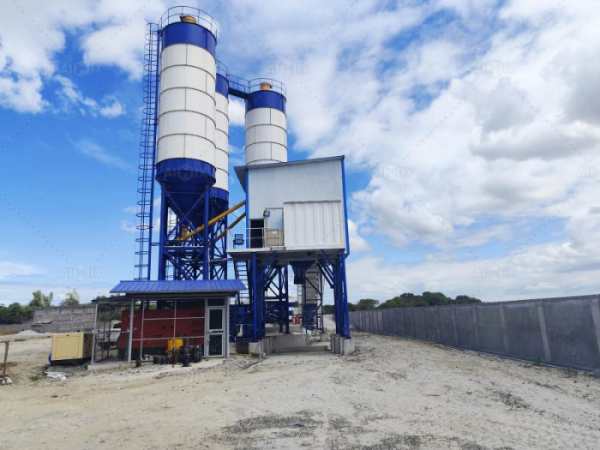


Mixing technology directly impacts stationary batching plant efficiency and output.
In the world of concrete production, consistency, speed, and quality are everything. For stationary batching plants—designed to deliver high-output, long-term concrete production—mixing technology plays a critical role in overall plant efficiency. From reducing cycle times to ensuring uniform mix quality, the right mixer can significantly impact both operational performance and profitability.
This article explores how different mixing technologies influence the efficiency of stationary batching plant, and why selecting the right type of mixer is essential for construction businesses targeting high-volume, high-quality concrete output.
Mixing is the core process of any batching plant. It determines how well raw materials—cement, aggregates, water, and admixtures—combine to form fresh concrete. Poor or inconsistent mixing can lead to weak concrete, segregation, or delays during casting, which can derail construction timelines and compromise structural integrity.
In stationary batching plants, where output often exceeds 60–180 m³/h, even small inefficiencies in mixing can accumulate into significant time and material losses.
Twin shaft mixers are among the most common and efficient options for stationary batching plants. They use two horizontal shafts with synchronized paddles to generate a turbulent mixing action.
Benefits:
Fast mixing cycles (as short as 30 seconds)
High homogeneity, even with low water-cement ratios
Ideal for high-strength and high-performance concrete
These mixers are especially suited for large-scale applications such as bridges, dams, and industrial buildings where quality control and production speed are essential.
Planetary mixers feature a rotating mixing star and blades that move in planetary motion, covering the entire mixing chamber.
Benefits:
Precise, thorough mixing for complex mixes
Excellent for precast and decorative concrete applications
Easy access for cleaning and maintenance
Though they have slightly longer mixing cycles, planetary mixers offer unmatched precision, which is critical for precast factories relying on consistent color and texture.
Single shaft mixers are a simpler alternative used in smaller or medium-capacity stationary plants.
Benefits:
Lower initial cost
Simpler mechanics and lower maintenance
Suitable for standard concrete grades
They are a good choice for mid-sized commercial construction or residential projects where ultra-high performance is not essential.
Advanced mixing technology also affects energy consumption and cycle time. More efficient mixers reduce power usage per cubic meter of concrete and allow the plant to cycle faster, increasing hourly output. Automation systems that optimize water dosing, material feed, and mixer speed further enhance these efficiencies.
The choice of mixing technology is central to the overall efficiency of a stationary batching plant. Whether your project demands high-speed production, ultra-precise mixes, or cost-effective standard concrete, investing in the right mixer ensures better performance, longer equipment life, and higher ROI.
When evaluating a stationary batching plant, always consider the mixer type, capacity, mixing speed, and application suitability—because the mixer is where quality begins.
